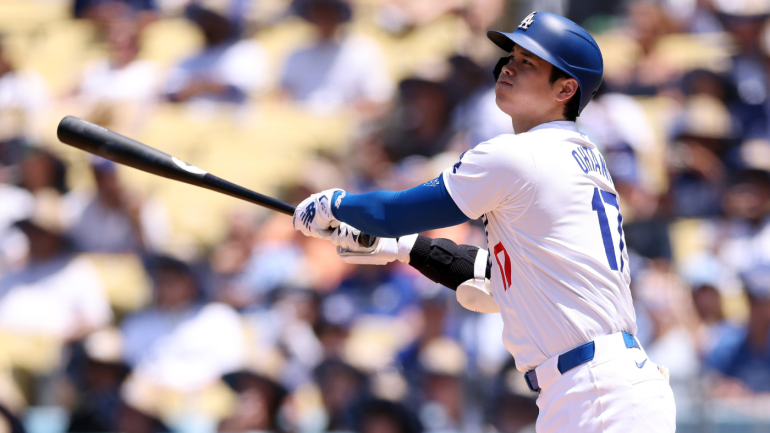
Los Angeles Dodgers star Shohei Ohtani launched his 18th home run of the season on Sunday afternoon against the Kansas City Royals (GameTracker). By doing so, Ohtani revealed yet another aspect of his game that separates him from the average ballplayer.
First, let's take a look at the home run in question, which came during the bottom of the third inning against Royals right-hander Brady Singer. You can watcb the home run in all its moving picture glory below. Just know that Ohtani's home run had an exit velocity of 114.3 mph and an estimated distance of 451 feet -- oh, and it went out to left-center field.
451 feet to the opposite field. 🤯
— MLB (@MLB) June 16, 2024
Shohei Ohtani is built different. 😤 pic.twitter.com/mY7msgDe2t
As it turns out, Dodger Stadium is one of the toughest ballparks in the league to hit long (read: 440 feet or beyond) home runs at. According to Sarah Lang of MLB's research, only Petco Park and Oracle Park, the homes of the San Diego Padres and San Francisco Giants, have seen fewer "long" home runs during the Statcast Era (2015 onward).
Nevertheless, Ohtani has now launched three "long" home runs at Dodger Stadium during his first season with the organization -- that ties him for the single-season record in that respect, alongside Yasmani Grandal (2016) and Yasiel Puig (2017).
Lest it be lost on anyone, the 2024 season isn't halfway over. Here's a look at Ohtani's other "long" home runs at Dodger Stadium:
- May 5 vs. Atlanta Braves: 464 ft
- June 16 vs. Kansas City Royals: 451 ft
- May 6 vs. Miami Marlins: 441 ft
What's more is that, according to Langs, there's only one player with four or more career "long" home runs at Dodger Stadium during the Statcast Era: Joc Pederson, at four. It's possible that Ohtani will tie that record over the coming weeks. It's even more certain that he'll shatter that mark over the course of his 10-year pact with the Dodgers organization.
Ohtani, 29, entered Sunday hitting .305/.377/.571 (167 OPS+) with 17 home runs and 15 stolen bases in 69 games. His contributions have been worth an estimated 3.2 Wins Above Replacement, per the calculations housed at Baseball Reference.


















